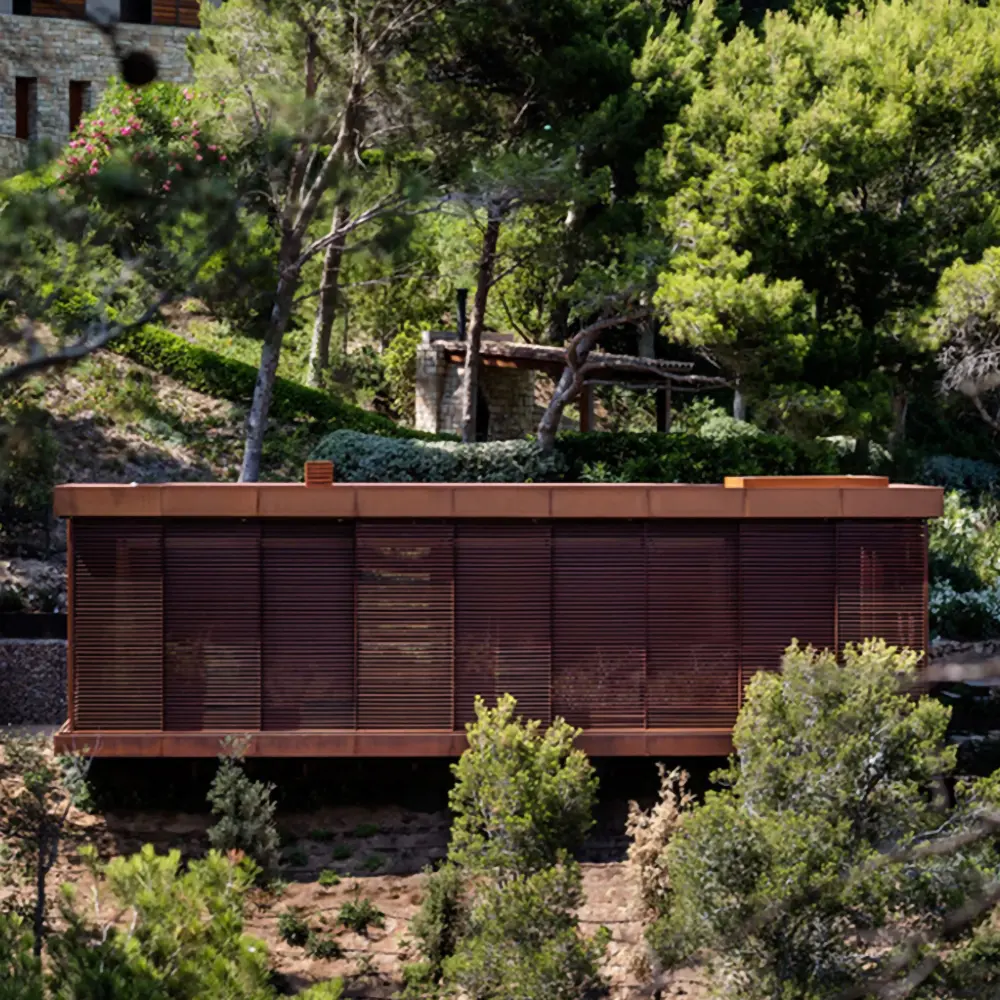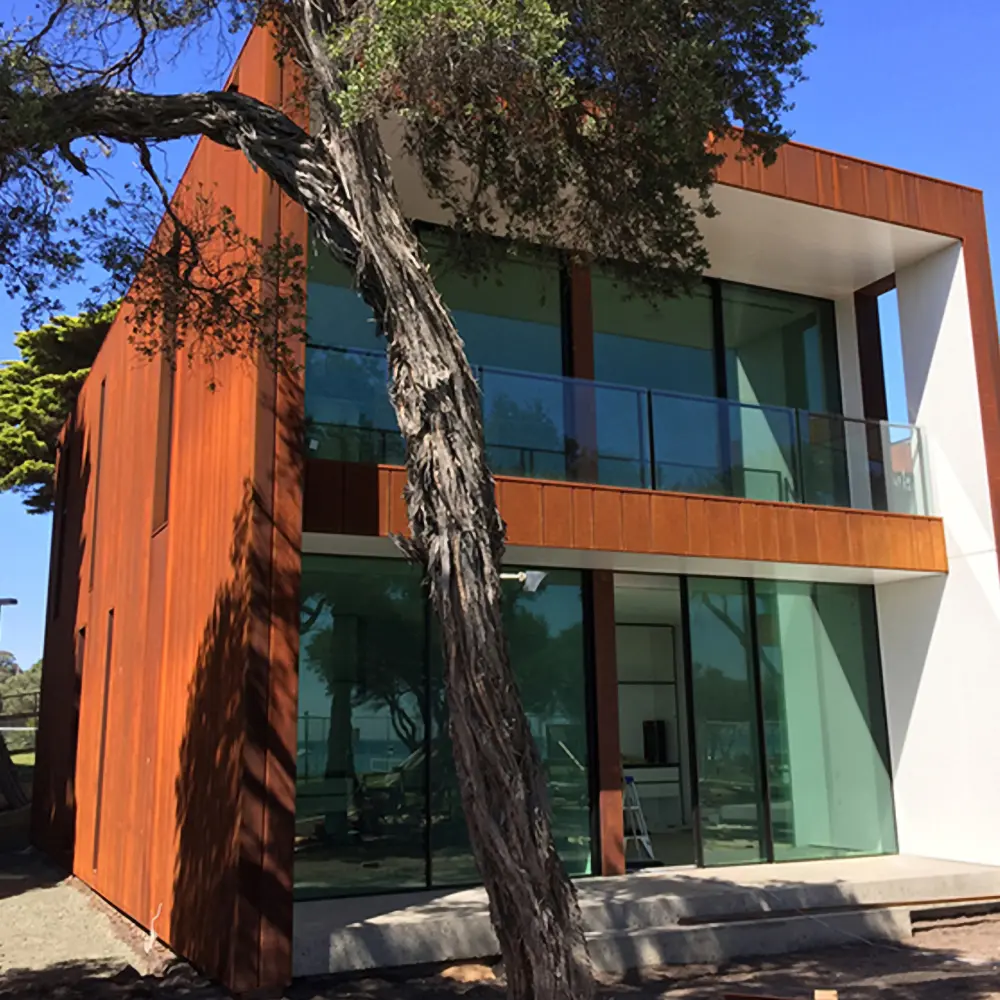
Moxon Architects add perforated weathering steel extension for Aberdeenshire Council
Moxon Architects have restored and converted a conservation-listed building and a former police station in Fraserburgh, Scotland, and added a modern extension clad in weathering steel.
Two municipal buildings – the Category B-listed Fraserburgh Municipal Buildings and the derelict police station – have been converted into a facility that serves as the headquarters for Aberdeenshire Council.
Weathered steel was chosen because of its association with the port city’s harbor.
Moxon Architects, which has offices in London and the Aberdeenshire Highlands, constructed an extension linking the refurbished building using corten steel.
The extension is set back from the east gable and indented to the rear, connecting the townhouses to the police station.
The new structure was constructed using weathering steel and curtain walling. Perforations in the steel panels allow views of the original masonry.
Its glazed front shows the façade of the existing building, which forms the internal walls of the extension.
“The steel-clad extension is intended to be understood as a durable, but largely permeable structure that contrasts with the massive architectural typology of the existing building,” said Ben Addy, managing director of Moxon Architects.
“Weathering steel, suitably pre-oxidized, appealed to us to provide a visual counterpoint,” he added.
“Fundamentally, we love the material and there is a beautiful serendipity to the striping effect created during the pre-painting process and how that translates to the façade of the finished building,” he added.
The openings in the steel structure widen alongside the stairs and stair landings to provide views of the Cape Kinnaird lighthouse and fishing harbor, and their design references the surrounding environment.
“The pattern draws on the spacing of fences on neighboring stained glass windows, the harbor’s boat grates, fishing nets, and the weave of textiles,” explains Adi.
Although the rear extension is not visible from the front of the existing building, it is the new ‘vestibule’ for all council services and provides access to all floors.
It also provides a low-carbon air source heating system throughout the building.
As well as meeting space for public and council use, the extension has a range of ancillary facilities that relieve pressure on the existing building.
“The extension both addresses the harbor area visible from the top of the building, providing a direct material reference for the town’s defining industry in terms of color, texture, and pattern and also provides a new active frontier for public housing in North Brehertz,” says Adie.






